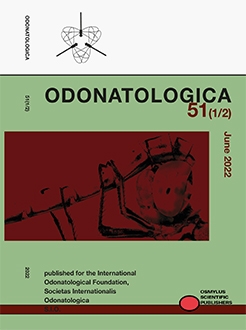To assess the suitability of a habitat for breeding by odonates, the best strategy is to search for exuviae or final instar larvae. However, due to their low detectability and the difficulty of sampling these stages, most studies in applied ecological research have targeted adult odonates, even though adults may be found in places unsuitable for successful breeding. Here, we tested odonate sampling methods in permanent rivers in the north-western Iberian Peninsula, focusing on three main objectives: (i) to study the degree of concordance of species lists obtained from sampling larvae, exuviae and adults; (ii) to estimate how long exuviae are available for sampling and how this time affects the results; and (iii) to analyse potential observer biases, due to the different ability of researchers to detect exuviae. We found that the time exuviae remain in place varies with taxon but is generally short (7–8 days), which could lead to under-detection. We also found that adult odonates may be found in parts of the river that have no suitable habitat for their larvae. Furthermore, we were able to find more species as exuviae than by sampling adults or larvae and some taxa, such as gomphids, were difficult to find as adults but exuviae were very commonly observed. We did not find significant differences between observers in their ability to detect and identify exuviae. Altogether, our results suggest that in some systems, recording only adults could lead to inaccurate survey results, making it essential to include exuviae to avoid sampling bias.
How to translate text using browser tools
1 June 2022
Sampling larvae, exuviae or adults of Odonata for ecological studies: a test of methods in permanent rivers in the Iberian Peninsula
Genaro da Silva-Méndez,
Sara Riso,
M. Olalla Lorenzo-Carballa,
Adolfo Cordero-Rivera
ACCESS THE FULL ARTICLE

Odonatologica
Vol. 51 • No. 1-2
June 2022
Vol. 51 • No. 1-2
June 2022
Bioindicators
damselfly
dragonfly
lotic systems
sampling issues
survey bias





